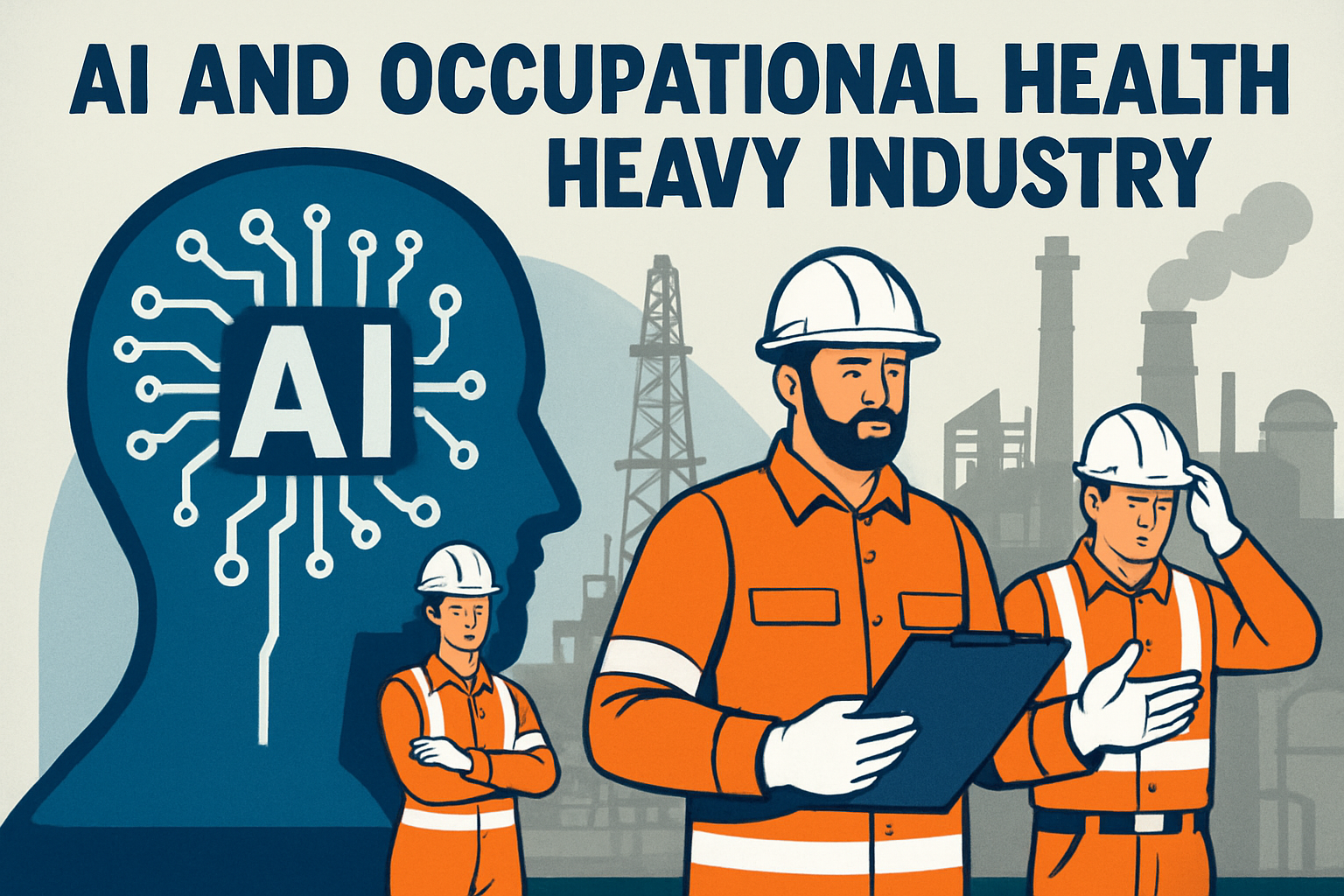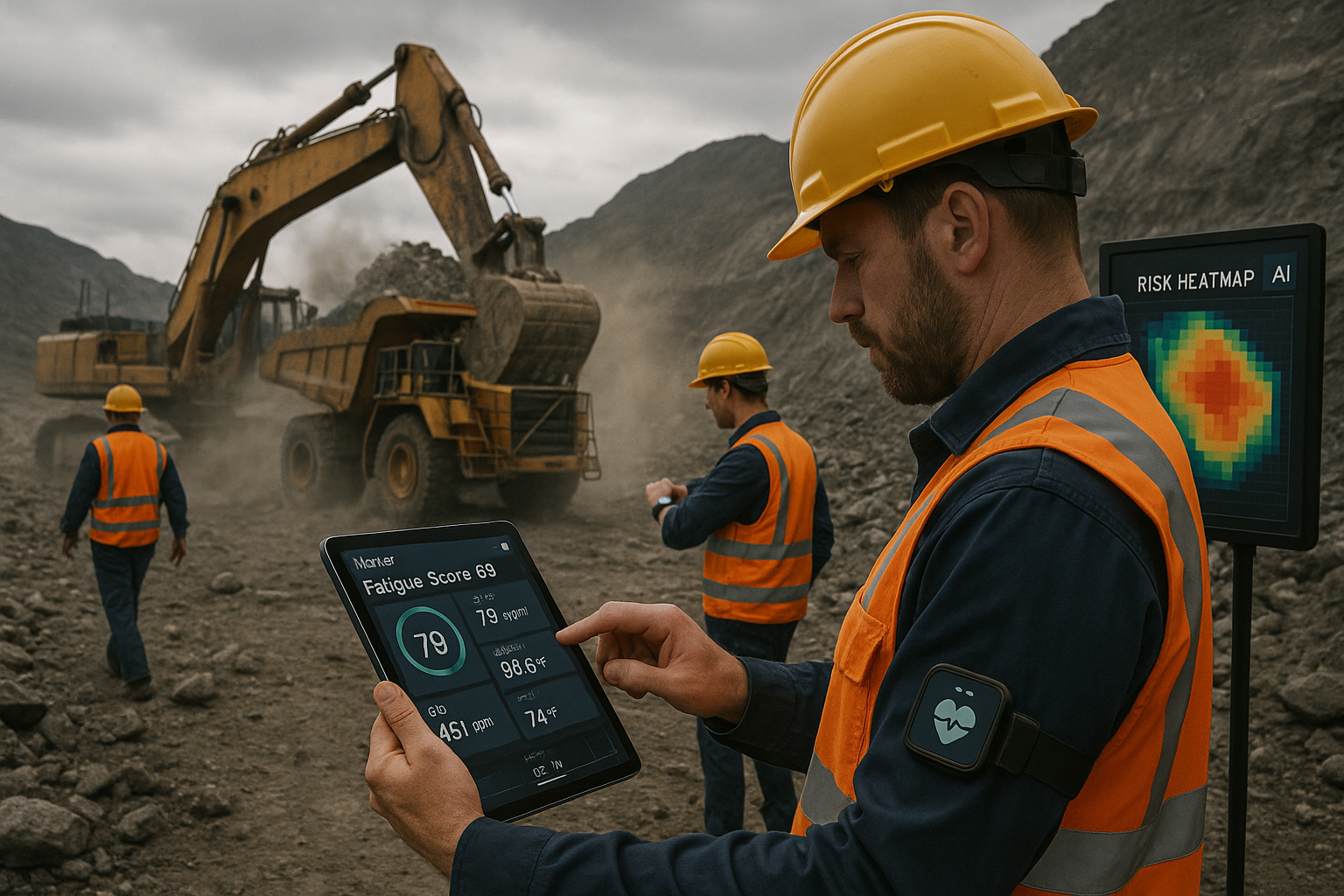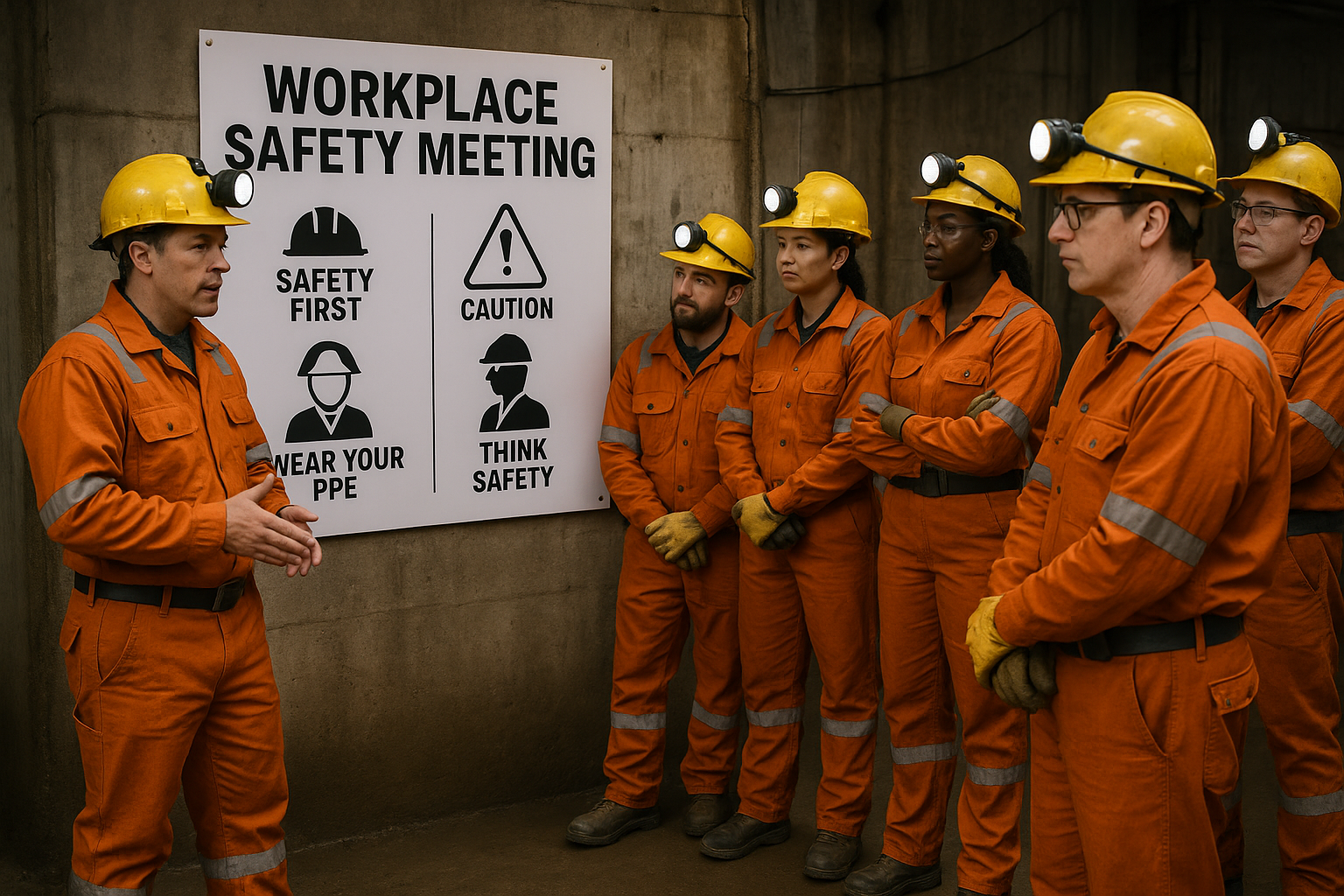Top 7 Ways AI Is Enhancing Safety in Mining Operations
The mining industry is facing significant challenges, grappling with declining ore grades, remote locations, and increasing operational complexities, along with an emphasis on operator health and safey, environmental impact, and increased regulatory compliance. To address these challenges and remain competitive, forward-thinking mining companies are turning to technologies to introduce AI in mining in order to optimize their processes.
For more relevant, up-to-the-minute content on AI in mining, follow Fatigue Science's CEO Andrew Morden on Facebook.
Artificial intelligence (AI) has emerged as a transformative force in the mining sector, offering innovative solutions to age-old problems. By leveraging the power of machine learning, data analytics, and autonomous systems, AI is revolutionizing the way mines operate, from exploration to extraction and beyond.
What is AI in mining, exactly?
AI in mining involves the integration of AI technologies to enhance various aspects of mining operations. From exploration to extraction to health and safety, AI helps optimize processes, improve safety, and increase efficiency.
By leveraging vast amounts of data generated by sensors, equipment, and other sources, AI algorithms can identify patterns, predict outcomes, and help you make informed decisions in real time.
Machine learning, a subset of AI, plays a crucial role in mining applications. It enables systems to learn from historical data and improve their performance over time without being explicitly programmed. This allows for the development of predictive models that can anticipate equipment failures, optimize resource allocation, and identify potential safety hazards.
Some of the key AI technologies used in mining include:
-
Computer vision: AI-powered cameras and drones can monitor mine sites, detect anomalies, and ensure compliance with safety regulations.
-
Natural language processing (NLP): NLP enables the analysis of unstructured data, such as maintenance logs and incident reports, to extract valuable insights.
-
Robotics and autonomous vehicles: AI-driven robots and self-driving trucks can perform dangerous tasks, reduce human exposure to hazards, and improve operational efficiency.
By integrating these technologies into your operations, your mining company can unlock significant value and gain a competitive edge in an increasingly challenging industry.
Top 7 Ways AI is Enhancing Safety in Mining Operations
1. Intelligent Equipment Maintenance
AI in mining is transforming equipment maintenance by enabling intelligent upkeep strategies. Using machine learning models, systems can analyze operational data to forecast when machinery might need attention, which helps prevent unplanned stoppages.
This proactive approach reduces the risk of operational failures and enhances safety by ensuring equipment remains in peak condition.
Autonomous vehicles are one of the clearest examples of AI in mining. It’s an exciting use case, for sure...but adoption is still in the early stages.
Deployments are limited, and most operations still require human oversight. Autonomous vehicles certainly aren’t taking away operators’ jobs right now.
That said, the benefits are still undeniable. These systems reduce safety risks, improve efficiency, and allow teams to focus on higher-value tasks.
The lesson here is that AI doesn’t have to be perfect to create value.
Even incremental improvements in autonomy and safety can make a measurable difference in high-hazard industries.- Andrew Morden, Fatigue Science CEO
2. Proactive Hazard Identification
AI excels at identifying potential hazards before they become critical. By processing data from sensors and cameras, AI systems can pinpoint unusual patterns or conditions that may pose risks.
This capability allows for swift intervention, protecting workers from potential threats. AI-powered aerial vehicles provide comprehensive site overviews, enhancing the ability to anticipate and respond to environmental changes.
AI-enabled drones are saving lives in search and rescue operations. They go where humans can’t—collapsed buildings, hazardous zones—and identify people in need of help. This same principle applies to safety tech in mining, transportation, and other industries.
AI allows us to “see” risks we couldn’t before, like fatigue or equipment failure, and act before they escalate.
The technology may differ, but the goal is the same: protecting lives.
AI isn’t just about efficiency; it’s about enabling actions we couldn’t take otherwise."- Andrew Morden, Fatigue Science CEO
3. Automated Machinery and Robotics
AI-driven automation is pivotal in reducing human exposure to hazardous tasks. Autonomous machinery and robotics navigate complex terrains, performing tasks with precision and safety. By handling repetitive and risky jobs, these systems allow workers to engage in more strategic roles, enhancing overall safety and operational efficiency.
4. Real-Time Health Surveillance
Wearable AI technology like Fatigue Science's ReadiWatch is revolutionizing worker health surveillance by providing real-time insights.
Wearable devices equipped with advanced sensors can monitor vital health metrics and environmental conditions, offering instant feedback to workers and supervisors.
When potential risks are detected, immediate alerts enable preventative measures, safeguarding worker health and minimizing accident risks.
5. Immersive Safety Training
AI in mining is reinventing safety training through immersive and interactive simulations.
Using virtual reality and AI technologies, workers experience realistic scenarios that prepare them for real-world challenges without exposure to actual danger.
This method enhances learning outcomes and equips workers with the skills needed to handle emergencies effectively.
6. Comprehensive Safety Insights
AI's analytical capabilities provide deep insights into safety metrics across mining operations.
By examining historical, real-time, and predictive safety data, AI systems can identify trends and inform safety strategies. This data-driven approach allows companies to refine safety protocols and ensure resources are allocated efficiently, continuously improving safety outcomes.
Fatigue Science's Readi fatigue risk management system, for example, can predict fatigue risk in individual workers for up to 18 hours, hour by hour. This fatigue management solution for mining can offer preventative risk mitigation.
7. Predictive Environmental Monitoring
AI enhances environmental monitoring by predicting potential hazardous events.
By analyzing geological and meteorological data, AI systems can forecast natural incidents like landslides, enabling preemptive action. This foresight not only protects workers and equipment but also supports compliance with environmental standards, minimizing the ecological impact of mining activities.
AI in Mining FAQs
What are the key applications of AI in the mining industry?
Within the mining sector, AI supports a spectrum of functions that elevate operational productivity and secure work environments. It revolutionizes the way mines conduct mineral exploration, refine extraction techniques, and manage resources effectively. AI's influence extends to predictive maintenance, enabling real-time monitoring and reinforcing sustainable practices across mining sites.
How does AI improve safety in mining operations?
AI in mining bolsters safety by offering predictive insights and enabling automation to handle high-risk tasks. Through advanced monitoring systems, AI detects potential hazards and risks, allowing for proactive measures to mitigate risks. This technology not only safeguards workers but also enhances operational continuity by minimizing disruptions due to safety incidents.
What are the benefits of using AI for predictive maintenance in mining?
AI-driven predictive maintenance significantly enhances equipment reliability and reduces operational interruptions. By leveraging vast datasets, AI identifies wear patterns and predicts maintenance needs well in advance. This strategic foresight minimizes unexpected breakdowns and optimizes maintenance schedules, ensuring machinery operates at peak performance while maintaining a secure working environment.
What are some examples of AI technologies used in mining?
Mining operations utilize a range of AI innovations to improve efficiency and safety. Systems that employ deep learning algorithms analyze video feeds for real-time site assessment, while text analytics tools extract actionable insights from operational reports. Autonomous systems and drones equipped with AI perform complex tasks, contributing to safer and more precise mining operations.
How is AI expected to shape the future of the mining sector?
Looking ahead, AI is poised to drive transformative changes in mining by fostering innovation and enhancing operational efficacy. As AI technologies progress, they will facilitate more responsible and efficient mining processes. From advanced mineral discovery techniques to improved environmental management, AI will be instrumental in crafting a future where mining is not only more productive but also aligned with sustainable practices.
Final Thoughts
AI continues to revolutionize the mining industry, setting new benchmarks in operational excellence and safety standards. Its integration into core mining activities not only boosts productivity but also cultivates a proactive safety culture. As AI technologies advance, they promise to introduce even more sophisticated solutions that cater to both present challenges and future industry demands.
Innovations in AI-driven tools will likely propel the mining sector into uncharted territories of efficiency and environmental stewardship. For example, cutting-edge algorithms can enhance precision in mineral exploration, ensuring that extraction methods are both effective and sustainable. Moreover, AI's rapid data-processing capabilities enable swift operational adjustments, minimizing resource waste while maximizing output.
As the mining landscape embraces AI advancements, the scope for innovation becomes expansive. The ongoing evolution of AI technologies will undoubtedly lead to more autonomous systems capable of managing complex operations independently. With AI's growing influence, the mining sector is poised to achieve unprecedented levels of efficiency, safety, and sustainability, creating a more adaptive and future-ready industry.
As AI continues to transform the mining landscape, the possibilities for enhanced safety, efficiency, and sustainability are truly exciting. By embracing these innovative technologies, mining companies can position themselves at the forefront of the industry, driving positive change and securing a prosperous future. If you're ready to take your mining operations to the next level with cutting-edge AI solutions, book a demo to explore how Fatigue Science's predictive fatigue management software can improve safety and productivity – let us help you unlock the full potential of AI in mining.
Related Posts
-
The Future of Occupational Health in the AI EraThe workplace safety landscape is undergoing a fundamental transformation as artificial intelligence reshapes how organizations...
-
How AI Is Shaping the Future of Occupational HealthHow AI is Shaping the Future of Occupational Health
-
Understanding AI in Workplace Safety: A Comprehensive OverviewWorkplace safety has evolved from clipboards and quarterly audits to sophisticated systems that monitor, predict, and prevent...




